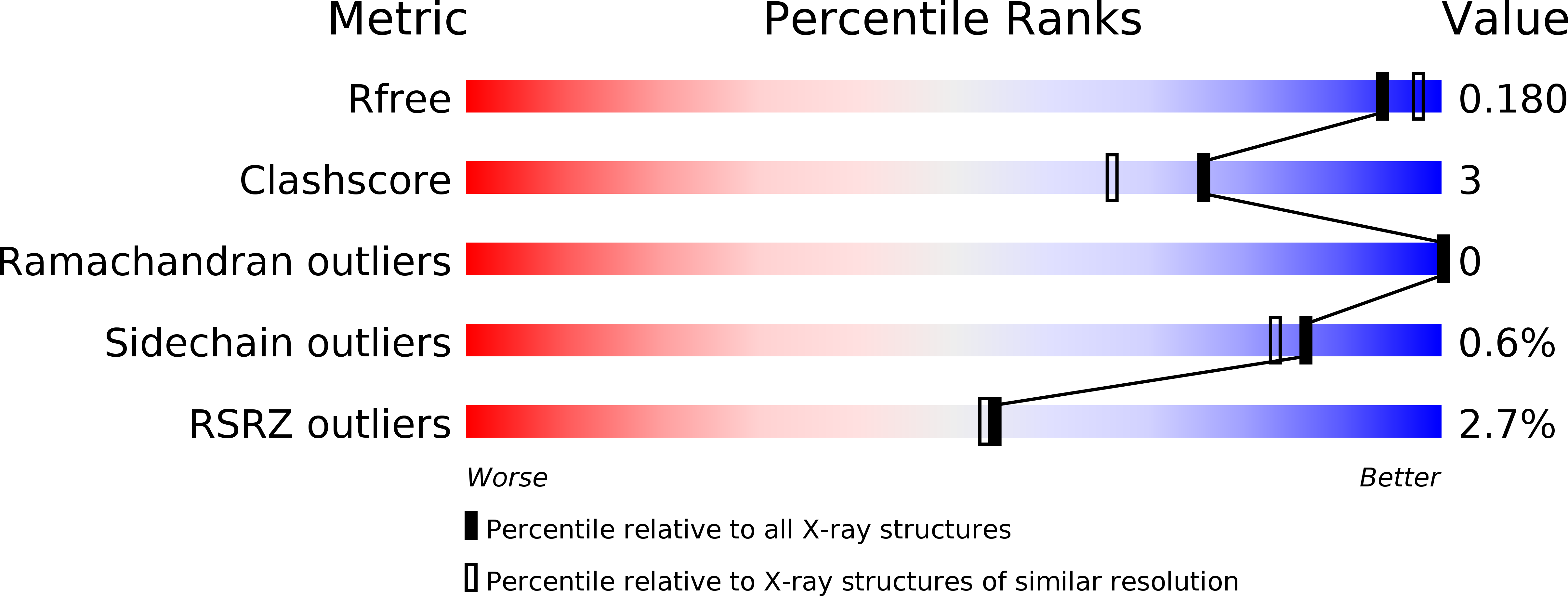
Deposition Date
2012-05-26
Release Date
2013-04-10
Last Version Date
2024-03-20
Entry Detail
PDB ID:
4FD9
Keywords:
Title:
Crystal structure of the third beta-gamma-crystallin domain of Crybg3 (betagamma-crystallin domain-containing protein 3) from Mus musculus
Biological Source:
Source Organism:
Mus musculus (Taxon ID: 10090)
Host Organism:
Method Details:
Experimental Method:
Resolution:
1.86 Å
R-Value Free:
0.17
R-Value Work:
0.13
R-Value Observed:
0.13
Space Group:
P 1 21 1


